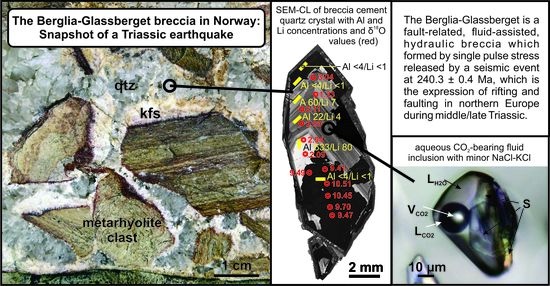The Hydrothermal Breccia of Berglia-Glassberget, Trøndelag, Norway: Snapshot of a Triassic Earthquake
Abstract
Share and Cite
Müller, A.; Ganerød, M.; Wiedenbeck, M.; Svendsen Spjelkavik, S.O.; Selbekk, R. The Hydrothermal Breccia of Berglia-Glassberget, Trøndelag, Norway: Snapshot of a Triassic Earthquake. Minerals 2018, 8, 175. https://doi.org/10.3390/min8050175
Müller A, Ganerød M, Wiedenbeck M, Svendsen Spjelkavik SO, Selbekk R. The Hydrothermal Breccia of Berglia-Glassberget, Trøndelag, Norway: Snapshot of a Triassic Earthquake. Minerals. 2018; 8(5):175. https://doi.org/10.3390/min8050175
Chicago/Turabian StyleMüller, Axel, Morgan Ganerød, Michael Wiedenbeck, Skule Olaus Svendsen Spjelkavik, and Rune Selbekk. 2018. "The Hydrothermal Breccia of Berglia-Glassberget, Trøndelag, Norway: Snapshot of a Triassic Earthquake" Minerals 8, no. 5: 175. https://doi.org/10.3390/min8050175
APA StyleMüller, A., Ganerød, M., Wiedenbeck, M., Svendsen Spjelkavik, S. O., & Selbekk, R. (2018). The Hydrothermal Breccia of Berglia-Glassberget, Trøndelag, Norway: Snapshot of a Triassic Earthquake. Minerals, 8(5), 175. https://doi.org/10.3390/min8050175




